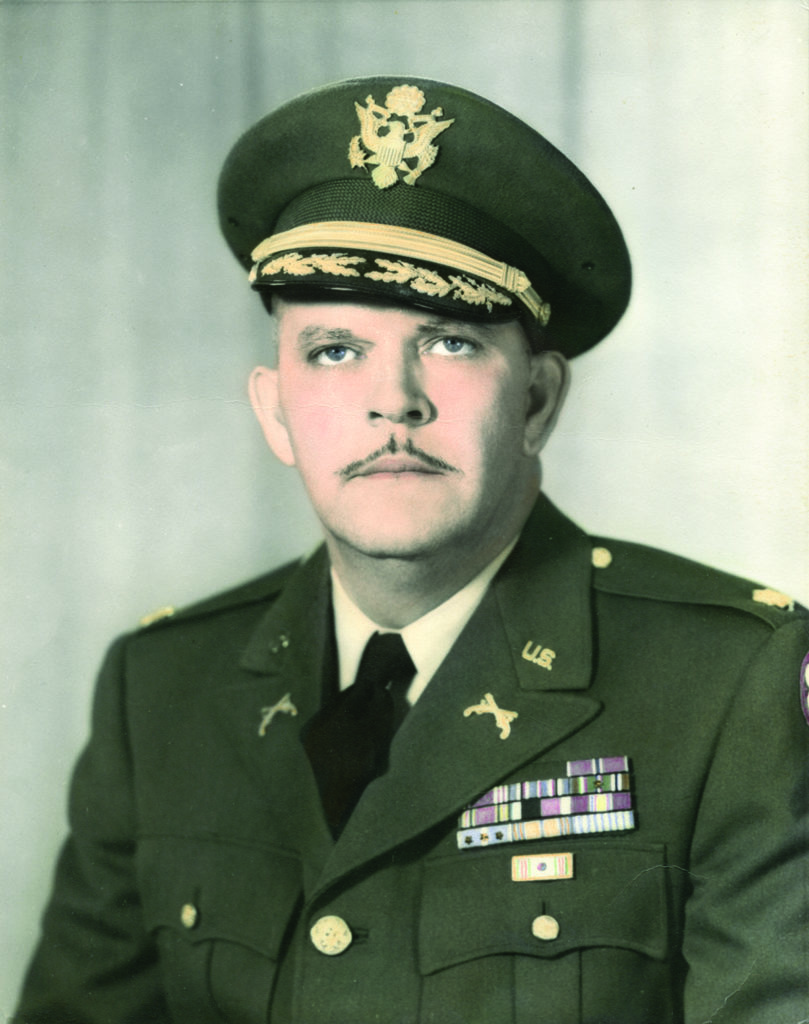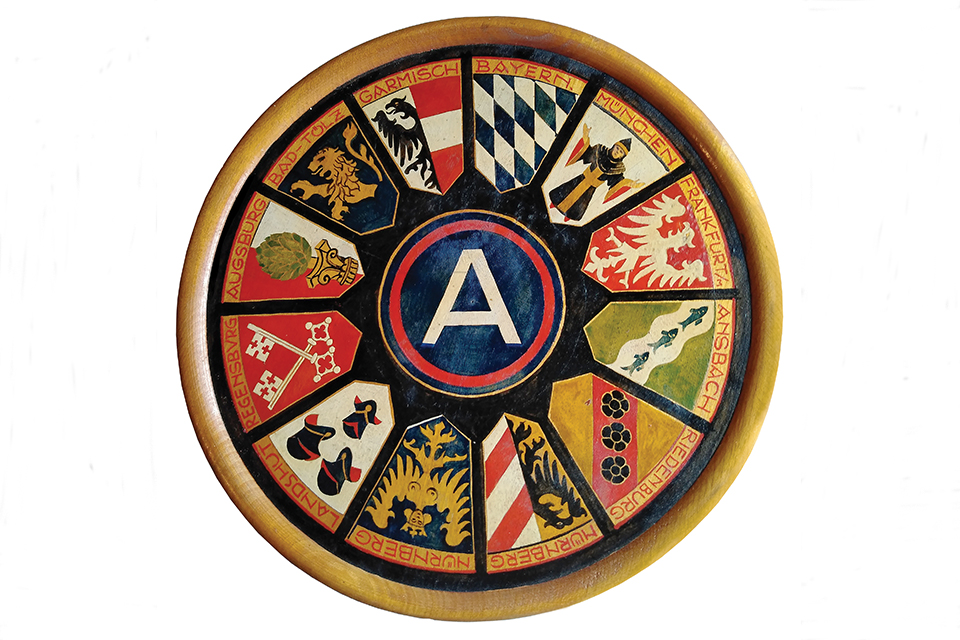A reader seeks clues about a mysterious war souvenir.
My dad, Ralph S. Chaplin, served in the Military Police with the Fifth Army during the war. He was later awarded a Bronze Star as a deputy security officer in Korea, retired as a major after 22 years in the military, and went to work as a cop on the South Side of Chicago, where he grew up. Now that I’m 70—and without him—I’m wishing I had asked him about so many things. My mother framed all of his medals, and we have lots of pictures, but I can’t seem to find any information about this wooden plate. Thanks for your attention, and for making such a special time in history available to so many.
—Kathi Coles, Lawrenceville, Ga.

On the surface, the plate looks to be a typical wartime souvenir, but it does offer us clues to your father’s service. In the center is the Third Army insignia. It is surrounded by the coats of arms for regions in Germany where the Third Army served. On the reverse, we find your dad’s name: “LT. R. Chaplin; HQ 793rd MP Bn.; Bad Tolz, Germany; 12 January 1946.”
Bad Tölz, a medieval Bavarian spa town, was the site of an officers’ training school for the Waffen SS. After the war, it played an important role in the formation of a police force for the American Zone of Allied-occupied Germany. On January 10, 1946, Major General Ernest N. Harmon was appointed commanding general of the U.S. Constabulary. He established the planning headquarters for this new force at Bad Tölz. The Third Army was then the U.S. Constabulary troops’ higher headquarters. While we can’t discern your father’s role from the plate itself, it certainly opens the door to inquiry.
Your request is a relatable one, I’m sure, to many children of veterans. Personally and professionally, your inquiry registered with me as well; every week I hear similar regrets about not having more information about a loved one’s service and about not having asked more questions while a veteran was still with us. Had more veterans been able and willing to document their experiences, our understanding of the war would be much richer. But in their silence, also, we learn different aspects of the war—of humanity, survival, and occasionally of trauma.
Your father’s legacy of service speaks for itself. A veteran of two wars, he was one of 575,000 Americans who served in World War II and Korea. The police force has been and remains a popular choice for veterans. And we are fortunate to have those who continue their service to the nation with service to their communities in the police force. —Kim Guise, Assistant Director for Curatorial Services, The National WWII Museum
Have a World War II artifact you can’t identify?
Write to Footlocker@historynet.com with the following:
— Your connection to the object and what you know about it.
— The object’s dimensions, in inches.
— Several high-resolution digital photos taken close up and from varying angles.
— Pictures should be in color, and at least 300 dpi.
This article was published in the February 2020 issue of World War II.





